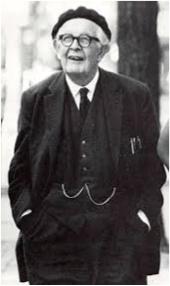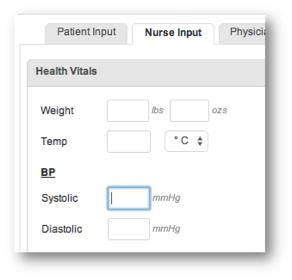Jean Piaget & the Usability of Healthcare Software
 Bennett LauberJean Piaget was a Swiss psychologist and philosopher known for his epistemological studies with children. His theories of cognitive development helped pioneer the field of developmental psychology and influenced generations of elementary school curriculum.
Bennett LauberJean Piaget was a Swiss psychologist and philosopher known for his epistemological studies with children. His theories of cognitive development helped pioneer the field of developmental psychology and influenced generations of elementary school curriculum.
The usability of healthcare software, or lack thereof, has been a topic of discussion for several years. The problem has become so widespread that the American Medical Association (AMA) has recently issued a framework for improving the ease of use of EHRs that, in part, includes the reduction of 'cognitive load.' Piaget’s theories can be applied to understanding some of the reasons why many EHRs are just too hard to use. They can provide guidance for finding ways to reduce the cognitive workload that so often hinders the user experience of EHR systems.
According to Piaget, people are born with a very basic mental structure or schema (genetically inherited and evolved) on which all subsequent learning and knowledge is based. What Piaget called a schema is the basic building block of intelligent behavior – a way of organizing knowledge. Piaget (1952) defined a schema as 'a cohesive, repeatable action sequence possessing component actions that are tightly interconnected and governed by a core meaning'.
 Jean PiagetPiaget's theories emphasized the importance of schemas in cognitive development, and described how they were developed or acquired. We all have schemas for interacting with the world in our everyday life. They provide us with the mental facility and knowledge needed to perform our daily tasks. When eating out at a restaurant, for example, we all know how things will progress: The restaurant staff will great us, then seat us, offer a drink, provide the menu, let us look at it, order, etc. As long as everything goes according to our existing schema everything goes smoothly.
Jean PiagetPiaget's theories emphasized the importance of schemas in cognitive development, and described how they were developed or acquired. We all have schemas for interacting with the world in our everyday life. They provide us with the mental facility and knowledge needed to perform our daily tasks. When eating out at a restaurant, for example, we all know how things will progress: The restaurant staff will great us, then seat us, offer a drink, provide the menu, let us look at it, order, etc. As long as everything goes according to our existing schema everything goes smoothly.
Medical professionals have many schemas they use in their practice. Much like the restaurant example, seeing and treating a patient can most often follow a set pattern, or workflow: The patient arrives, vitals are taken then entered into the patient record, the doctor consults with the patient, possibly orders tests, or prescriptions, etc. So what happens when things don’t match an existing schema? As we gain more experience with the world, our schema must evolve via the processes of learning.
According the Piaget the learning takes place via the processes of Assimilation and Accommodation. Piaget used the terms Assimilation and Accommodation to describe how children are able to process and adapt their schema to new situations that have created a state of what he called disequilibrium in their cognitive structure. Assimilation occurs when you can take an existing mental structure and incorporate it into a new event. Assimilation does not cause much cognitive load on the person, as they are using an already existing mental structure to understand a new event.
When renting a car while on a business trip. Once you get into the car, you are fairly quickly able to get going and drive out of the parking lot. This is because the rental car matches your mental model of how to drive a car: You put on the seat belt, adjust the seat and mirrors and go.
Accommodation occurs when you must change your mental structure in order to understand and incorporate a new event. Accommodation requires much more of a cognitive load than assimilation, as it requires you to ‘rewire’ your brain and update or create a new mental structure to understand the event.
Perhaps you are using a Windows-based computer. Does it make sense that in order to shut down the computer you need to first select the “Start” button? It probably is something that today you don’t even think about, but what about the very first time that you used a Windows-based computer? Did it make sense then? Probably not. Your mental understanding of how to use computers had to accommodate the ‘feature’ of windows that logically seems quite counter-intuitive.
 Screenshot of Engineering centric EHR
Screenshot of Engineering centric EHR
When EHR systems are created with little or no input from healthcare professions or without a full understanding their workflow, or schema, it can increase the cognitive load placed upon the users of that system. Electronic Health Record (EHR) systems that require medical professionals to constantly accommodate to the schema (or workflow) of the system increases the cognitive load placed upon the users. Because these engineering-centric designed systems force their users to accommodate to a new way of doing things they are not perceived by healthcare professionals as usable. Here is an example of a vital signs entry form from an EHR we tested last year. The task was to enter a patient blood pressure reading:
Most of us have a schema for understanding blood pressure. We know that it follows a set pattern of Systolic/Diastolic, or 120/70. In this EHR system each of the vitals is presented in an unknown order in a custom list control. To enter the blood pressure, the user had to find Systolic, scroll down, select Systolic, and then enter the value. Once that value has been entered, then they had to find Diastolic scroll up and select Diastolic, and then enter the value. In order to use this control and this method for entering blood pressure, the medical professions had to make several accommodations to their understanding of data entry, and of blood pressure readings. They also had to remember which is systolic and which is diastolic. Here is an example of the blood pressure entry from another system we tested:
 Screenshot of User-Centric EHR
Screenshot of User-Centric EHR
The Systolic is presented over the Diastolic and the entry is as simple as selecting the fields and entering the value. This system matches the mental model of how to enter blood pressure readings and doesn’t require the user to accommodate to a new way of doing things. As evident from the sample systems presented above, there can be huge differences in the user interactions across EHRs. One of the systems above can be easily assimilated into a healthcare professional’s understanding of blood pressure entry, while the other forces them to make several schema accommodations. Which one would be perceived as more usable? The field of psychology, especially cognitive psychology has, among other things, focused on understanding the processes by which we store information, make decisions, and communicate with others. Understanding and integrating Piaget’s theories and those other cognitive psychologists can help inform a strategic user experience plan that focuses on the cognitive skills of users. Doing so will provide better EHR user experiences and can positively impact business ROI. Yes, usability in healthcare saves money, but also saves lives.
| Jean Piaget & the Usability of Healthcare Software was authored by Bennett Lauber and published in the Healthcare Usability blog. It is reprinted by Open Health News with permission. The original post can be found here. |
- Tags:
- American Medical Association (AMA)
- Bennett Lauber
- business ROI
- cognitive load
- cognitive psychology
- Electronic Health Record (EHR)
- engineering centric EHR design
- epistemology
- HCUX
- healthcare software
- human factor engineering (HFE)
- Jean Piaget
- lack of EHR usability
- medical professionals
- mental structure
- usability
- user experience (UX)
- user interface (UI)
- User-Centric EHR design
- Login to post comments